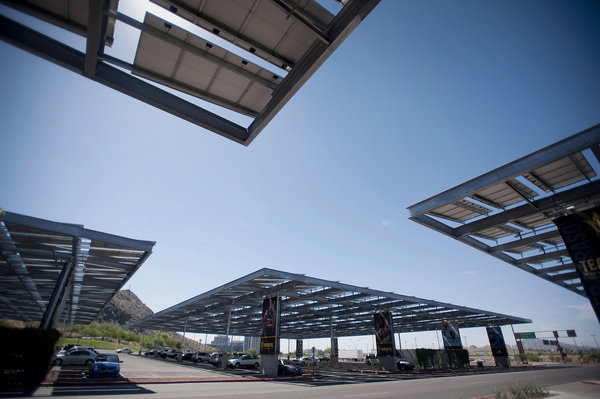forum
library
tutorial
contact

California Energy Storage Plan
May Require $3 Billion Investment
by Andrew Herndon
Renewable Energy World, June 13, 2013
|
the film forum library tutorial contact |

|
California Energy Storage Plan
by Andrew Herndon
|
Utilities would be required to procure 1,325 megawatts of storage capacity by 2020
under a June 10 proposal from the California Public Utilities Commission.
 SAN FRANCISCO -- Energy companies may invest as much as $3 billion on power-storage systems in California to facilitate wider use of renewable energy. Utilities owned by PG&E Corp., Sempra Energy and Edison International would be required to procure 1,325 megawatts of storage capacity by 2020 under a June 10 proposal from the California Public Utilities Commission.
SAN FRANCISCO -- Energy companies may invest as much as $3 billion on power-storage systems in California to facilitate wider use of renewable energy. Utilities owned by PG&E Corp., Sempra Energy and Edison International would be required to procure 1,325 megawatts of storage capacity by 2020 under a June 10 proposal from the California Public Utilities Commission.
California's utilities are required to provide by 2020 a third of their power from renewable sources like wind and sunlight that can't generate electricity constantly. Systems that retain some of the energy will make it easier to integrate intermittent technologies, said Praveen Kathpal, vice president of market and regulatory affairs at AES Corp.'s storage unit.
"This ruling recognizes that storage is going to be a valuable component of California's supply mix," Kathpal said in a phone interview yesterday. He estimated that 1,325 megawatts of storage may require about $1 billion to $3 billion in investment.
Public comments on the proposal will be accepted next month and the commission is expected to issue its final ruling by October, as required under a 2010 law.
The 1,325-megawatt target "is probably comparable to what's installed globally right now," Janice Lin, executive director of the California Energy Storage Alliance, an advocacy group, said yesterday by telephone.
That would "approximately double, or more, the amount of grid-connected energy storage," excluding pumped-hydro and conventional underground compressed-air facilities, she said. "It's significant in terms of industry growth."
Auction Program
Pacific Gas & Electric Co., San Diego Gas & Electric Co. and Southern California Edison Co. would procure energy-storage systems through reverse auctions that will start in June 2014 and be held biannually in 2016, 2018 and 2020, according to the filing. The companies are all reviewing the proposal, according to e-mailed responses from spokespeople.
The proposal is "setting a precedent" that may help utilities get approval for storage as part of regular rate proceedings, Philippe Bouchard, business development manager at New York-based Eos Energy Storage LLC, said in an interview. "It is nice to see them thinking about how energy storage can be incorporated into the utilities' typical way of doing business."
Storage systems based on lithium-batteries, which retain electricity, and molten salt, which holds heat that's used to run a turbine to produce energy, may help utilities meet the requirements, said Bloomberg New Energy Finance analyst Brian Warshay.
"There are several technologies ready to meet the challenge, with proven pilots in operation in California," he said.
Current Projects
Projects that are currently planned, approved or in development would be eligible to meet the targets, according to the filing.
That includes a 50-megawatt Edison International program in the Los Angeles area that was authorized in February and the company's 8-megawatt project at a wind farm near Tehachapi that will store power for as long as four hours.
PG&E has agreed to buy power from SolarReserve LLC's Rice project that includes molten salt storage. About 44.6 megawatts of storage capacity was approved in May as part of SDG&E's general rate case, the commission said.
learn more on topics covered in the film
see the video
read the script
learn the songs
discussion forum
